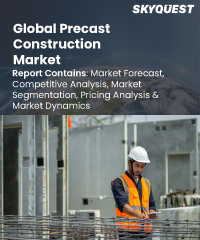
Report ID: SQMIG15F2107

Report ID:
SQMIG15F2107 |
Region:
Global |
Published Date: March, 2024
Pages:
184
|
Tables:
96 |
Figures:
76
Precast Construction Market size was valued at USD 161.37 Billion in 2023 and is poised to grow from USD 169.6 Billion in 2024 to USD 252.49 Billion by 2032, growing at a CAGR of 5.1% during the forecast period (2025-2032).
Precast concrete products are manufactured by pouring concrete into molds made of wood or steel, offering several advantages over on-site construction methods. The off-site manufacturing process allows for efficient production through the reuse of molds, reducing time and costs.
Precast construction methods also contribute to environmental benefits by reducing air pollution, debris, and noise during construction. The controlled manufacturing environment ensures superior quality control and consistency in precast products, which offer enhanced sound control and fire resistance for structures.
The use of precast elements eliminates the need for conventional formworks and enables standardized manufacturing processes for easy deployment at different construction sites.
Our industry expert will work with you to provide you with customized data in a short amount of time.
REQUEST FREE CUSTOMIZATIONWant to customize this report? This report can be personalized according to your needs. Our analysts and industry experts will work directly with you to understand your requirements and provide you with customized data in a short amount of time. We offer $1000 worth of FREE customization at the time of purchase.

Report ID: SQMIG15F2107